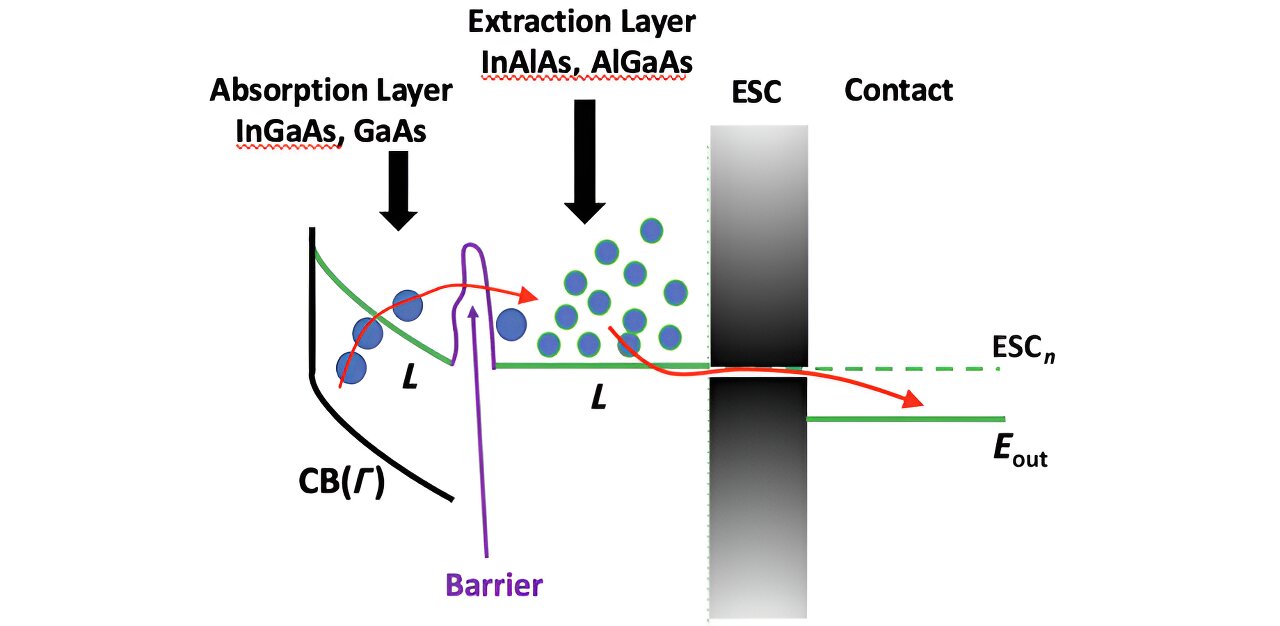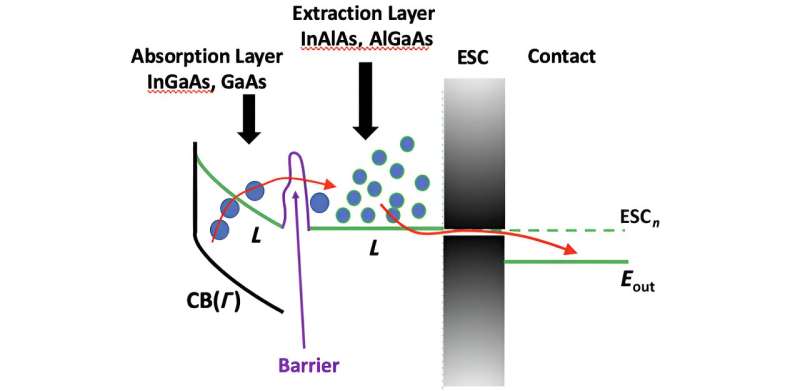

Hot carrier solar cells, a concept introduced several decades ago, have long been seen as a potential breakthrough in solar energy technology. These cells could surpass the Shockley–Queisser efficiency limit, which is a theoretical maximum efficiency for single-junction solar cells. Despite their promise, practical implementation has faced significant challenges, particularly in managing the rapid extraction of hot electrons across material interfaces.
Recent research has focused on using satellite valleys in the conduction band to temporarily store hot electrons before collection. However, experiments have revealed a parasitic barrier at the heterostructure interface between the absorber and extraction layers. This barrier complicates the transfer process, which occurs in real space rather than momentum space. When the energy bands of the two materials are not perfectly aligned, electrons can circumvent this barrier via tunneling, a process influenced by complex band structures.
In a new study published in the Journal of Photonics for Energy , researchers have examined these evanescent states and their impact on electron tunneling using an empirical pseudopotential method. This approach calculates energy bands in momentum space and aligns them with experimental data on critical points, providing insights into the physics that enables hot carrier extraction between carrier valley states and across heterointerfaces.
The findings provide a deeper understanding of the tunneling process and could light the way for more efficient hot carrier solar cells, bringing us closer to breaking the efficiency limits of current solar technology.
Specifically, the study showed that the tunneling coefficient, which measures the ease with which electrons can move through the barrier, is exponentially large in indium-aluminum-arsenide (InAlAs) and indium-gallium-arsenide (InGaAs) structures due to the mismatch in the energy bands of these two materials. This issue is worsened by even slight roughness at the interface, just a few atoms thick, which severely hampers electron transfer. These findings align with observations of poor performance in experimental devices using this material system.
Interestingly, the situation improves significantly within a system comprising AlGaAs and gallium-arsenide (GaAs) materials in which the aluminum composition in the barrier creates a degeneracy in the lower energy satellite valleys. Such a system benefits from better alignment of the energy bands and the ability to grow with atomic precision.
For instance, the tunneling coefficient for electron transfer between AlGaAs and GaAs can be as high as 0.5 or even 0.88, depending on the specific composition of AlGaAs used. This suggests a much more efficient transfer process, and the potential to harness valley photovoltaics and realize solar cells beyond the current single bandgap limits
In high-electron mobility transistors made from AlGaAs/GaAs, electrons typically move from AlGaAs to GaAs. However, hot carriers in GaAs can gain enough energy to transfer back into AlGaAs, a process known as real-space transfer. While this is usually undesirable in transistors, it is beneficial for valley photovoltaics, where efficient transfer and storage of hot carriers is crucial.
More information:
David K. Ferry et al, On the use of complex band structure to study valley photovoltaics: toward efficient hot carrier extraction, Journal of Photonics for Energy (2024). DOI: 10.1117/1.JPE.15.012502
Citation:
New insights into hot carrier solar cells: Study explores hot electron tunneling and collection to enhance efficiency (2024, September 24)
retrieved 24 September 2024
from https://phys.org/news/2024-09-insights-hot-carrier-solar-cells.html
This document is subject to copyright. Apart from any fair dealing for the purpose of private study or research, no
part may be reproduced without the written permission. The content is provided for information purposes only.